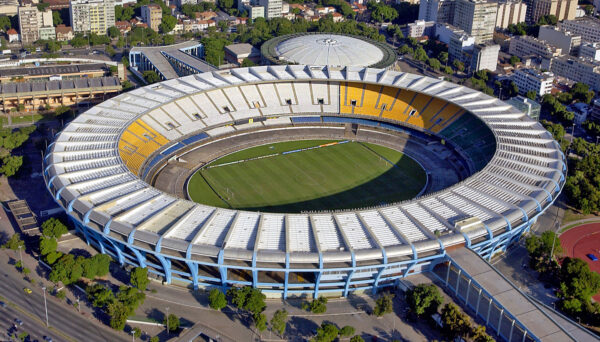
The Maracanã Stadium stands as a symbol of Brazil’s rich footballing heritage, captivating fans with its storied history and iconic status. Located in Rio de Janeiro, this legendary venue has witnessed some of the greatest moments in football history and continues to inspire generations of players and supporters alike.
Built for the 1950 FIFA World Cup, the Maracanã Stadium quickly became synonymous with football excellence, hosting the final match of the tournament, famously known as the “Maracanazo.” The stadium’s immense capacity, initially accommodating over 200,000 spectators, underscored Brazil’s passion for the beautiful game and solidified its reputation as one of the world’s premier football venues. Since then, the Maracanã has been the stage for countless historic matches, including Pele’s 1,000th career goal and Brazil’s triumphs in the Copa America and FIFA Confederations Cup.
Over the years, the Maracanã has undergone several renovations and modernizations to enhance the spectator experience while preserving its cultural significance. In 2014, the stadium underwent extensive renovations for the FIFA World Cup, including the installation of new seating, improved facilities, and upgraded amenities. Despite these changes, the Maracanã retained its historic charm and unique atmosphere, maintaining its status as the heart of Brazilian football.
Beyond its sporting significance, the Maracanã holds a special place in the hearts of Brazilians as a symbol of national pride and identity. The stadium’s iconic silhouette, with its distinctive arches and towering stands, is instantly recognizable around the world and serves as a beacon of Brazil’s footballing prowess. For many fans, attending a match at the Maracanã is a pilgrimage, a chance to witness history and be part of the vibrant tapestry of Brazilian football culture.
In addition to hosting football matches, the Maracanã has been the venue for numerous cultural events, concerts, and ceremonies, further cementing its status as a cultural landmark. From hosting the opening and closing ceremonies of the 2016 Olympic Games to welcoming some of the biggest names in music, the stadium continues to play a central role in Rio de Janeiro’s cultural landscape.
Despite its illustrious past, the Maracanã faces challenges in the modern era, including maintenance issues, financial concerns, and competition from newer stadiums. However, efforts are underway to preserve and revitalize this historic venue for future generations. In 2020, the state government of Rio de Janeiro signed a concession agreement with private operators to manage the Maracanã, with plans to modernize the stadium and ensure its long-term sustainability.
As Brazil prepares to host the 2023 Copa America and looks ahead to the 2026 FIFA World Cup, the Maracanã remains a symbol of the country’s enduring footballing legacy. Whether hosting international tournaments or local derbies, the stadium continues to unite fans from all walks of life in a celebration of the beautiful game. As long as the Maracanã stands, it will serve as a testament to Brazil’s passion for football and its place in the pantheon of world footballing greats.

